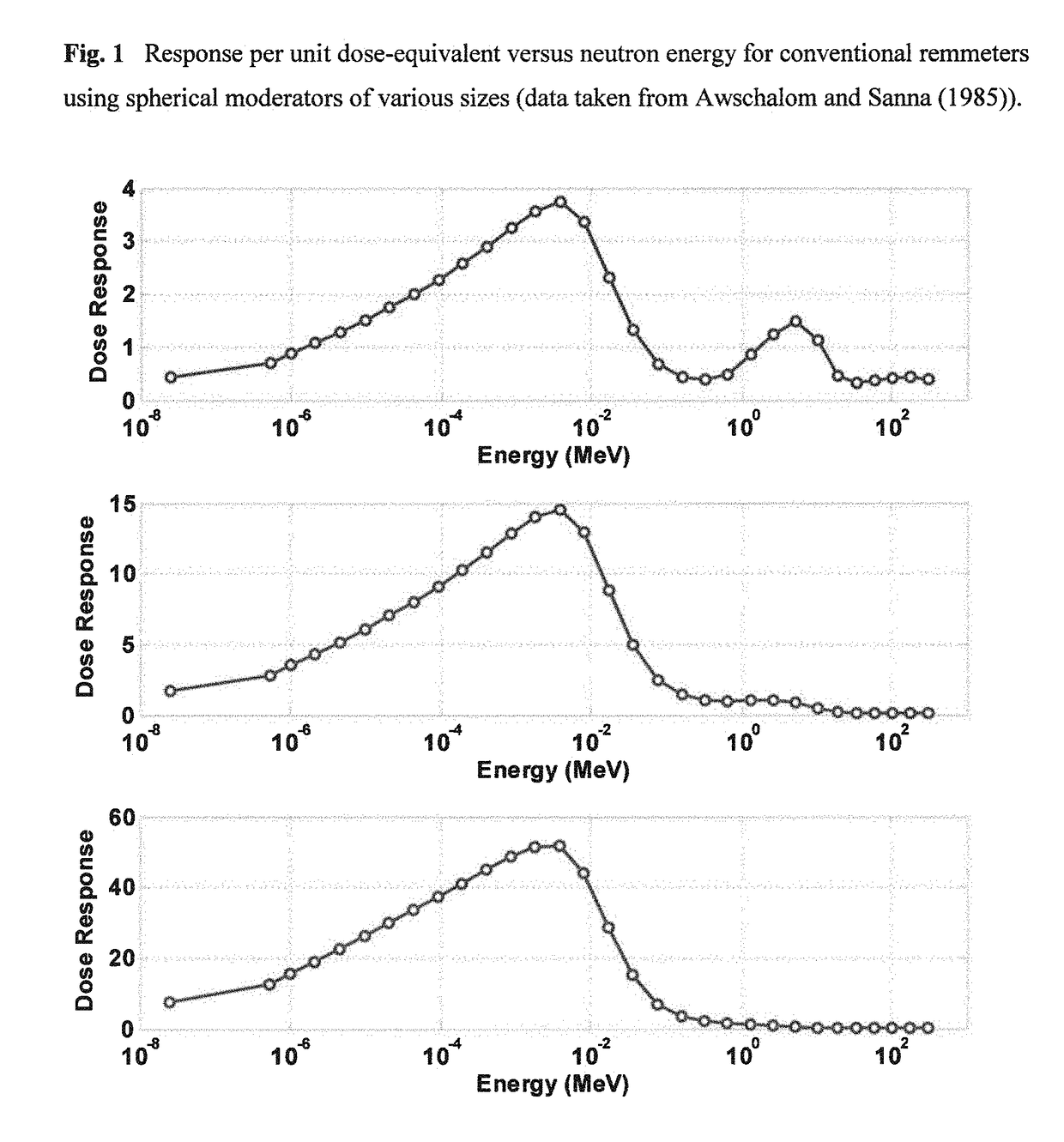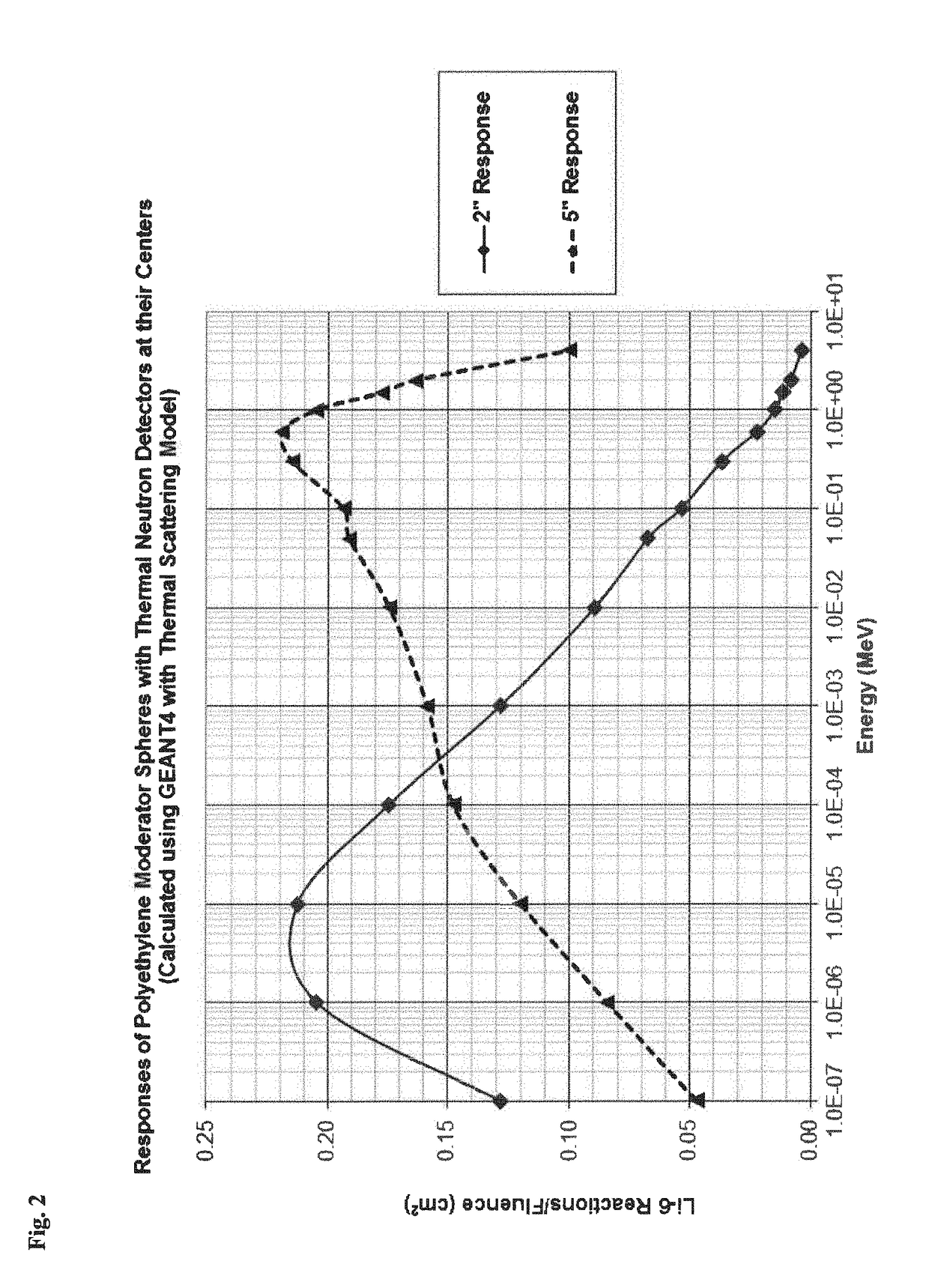Accurate light-weight broad-energy neutron remmeter and use thereof
a broad-energy, neutron remmeter technology, applied in the field of neutron remmeters, can solve the problems of sacrificing dose-equivalent accuracy, too small moderators smaller than about 8′′, and too heavy remmeters for ease of use in many operational scenarios, so as to achieve low dose rate and high dose rate detection. , the effect of optimizing the size of the moderator
- Summary
- Abstract
- Description
- Claims
- Application Information
AI Technical Summary
Benefits of technology
Problems solved by technology
Method used
Image
Examples
Embodiment Construction
[0034]The recent development of a plastic scintillator (Zaitseva et al (2012)) that has neutron / gamma discrimination properties comparable to that of the traditional hydrogenous liquid scintillator (BC 501A) to permit the electronic separation of neutron and gamma-ray signals, provides a basic technology for the development of a general purpose light remmeter along the lines of our Microspec Spectroscopic Neutron Probe (MSNP). The new plastic scintillator overcomes the major operational weaknesses of the previous liquid scintillator by allowing its use below freezing temperatures and eliminating the issue of failure of the liquid seal. The use of the new plastic scintillator enables the development of the long-sought light-weight remmeter.
[0035]However, the use of the new plastic scintillator only enables the measurement and dosimetry of fast neutrons of ˜0.8 MeV and above and, on its own, does not provide accurate dosimetry for thermal and intermediate energy neutrons. In the MSNP,...
PUM
 Login to View More
Login to View More Abstract
Description
Claims
Application Information
 Login to View More
Login to View More - R&D
- Intellectual Property
- Life Sciences
- Materials
- Tech Scout
- Unparalleled Data Quality
- Higher Quality Content
- 60% Fewer Hallucinations
Browse by: Latest US Patents, China's latest patents, Technical Efficacy Thesaurus, Application Domain, Technology Topic, Popular Technical Reports.
© 2025 PatSnap. All rights reserved.Legal|Privacy policy|Modern Slavery Act Transparency Statement|Sitemap|About US| Contact US: help@patsnap.com



